This afternoon the Bank of England raised the base rate for a third consecutive time to 0.75%.
Susannah Streeter, senior investment and markets analyst, Hargreaves Lansdown:
“With the shadow of stagflation looming, the Bank of England is in a difficult predicament, so it restricted the rate rise to 0.25 percentage points to try and ensure growth isn’t choked off while it tries to get a grip on rampant prices.
But this limited move means inflation will slip away and slide upwards again.
The commodity chaos unleashed by the conflict in Ukraine, is set to feed through to consumer prices, and unwelcome energy bills are already poised to land on mats in April.
The Bank is now predicting inflation rises to 8% in April and remains there for the rest of the quarter.
It’s also expecting another peak in October, when the energy price cap rises again.
The price rises across the board are already feeding into wage demands, and although real wages (without bonuses) fell in the three months to January, policymakers want to avoid an upwards spiral of wages and prices, by trying to suppress demand for goods and services to help try and bring down prices.
So the central bank grip is highly likely to intensify in the months to come, with higher borrowing costs set to tighten the uncomfortable cost-of-living belt by a few more notches.
But there is still plenty of uncertainty around the table about the path of those rate rises.
Similarly there is still worry among investors about the unfolding events in Ukraine and how the tense situation will affect the economy and monetary policy in the UK.
In the HL monthly survey, confidence that interest rates are going to be higher fell for the short, mid, and long term.
88% of clients said they were confident that rates would be higher over the next six months, compared to 90% last month.”
Sarah Coles, senior personal finance analyst, Hargreaves Lansdown:
“Every Bank of England rate rise builds frustration for savers, as savings rates resolutely refuse to move. Despite three Bank of England rate hikes, the high street giants are still offering just 0.01% on most easy access savings accounts, and the best rates only reflect a fraction of the increase.
In order to squeeze 1% out of the easy access market you have to open a Virgin current account.
The big banks are carrying on as if we haven’t had a rate rise at all, because there’s really no need for them to do anything else.
During the pandemic, savers flooded back to familiar high street banks with their lockdown savings.
With so much cash sloshing around, they can continue offering rock bottom savings rates and cheap mortgage deals.
It means newer and smaller banks need to offer cheap mortgages to compete, so they can’t afford to boost their savings rates dramatically either.
There is some hope of rate rises though.
As more people spend their lockdown savings, and as savers regain some confidence in life returning to normal, it will deflate the cushion of cash that the big banks are sitting on, and make it increasingly likely they’ll start to nudge rates up.
In the interim, it’s well worth keeping your eyes peeled for better rates from the newer players.
There are so many easy access accounts bunched between 0.7% and 0.8% that there’s a good chance we’ll get more of them breaking above this level as the market slowly grinds towards 1%.
Rising rates bring bad news for borrowers.
We’ve got used to bargain basement borrowing over the past few years, so we’re going to have to adjust to paying more on our debts.
Our mortgages are protected to a large extent by the fact that most of us are on fixed rate deals.
New borrowers have also been sheltered from the full impact of the rate rise, because the high street banks are still sitting on such a cushion of cash that they can afford to offer exceptionally cheap deals.
However, new rates are starting to creep up, and in February, Moneyfacts put the average two-year deal at 2.44% – up from 2.38% in January but down from a year earlier.
Meanwhile, anyone on a tracker or standard variable rate has been hit hard.
The average SVR jumped 0.15 percentage points in March to an eye-watering 4.61%. It means that it’s well worth considering fixing your rate sooner rather than later if it makes sense for your circumstances.
Today’s rate rise will feed into the cost of credit cards, both on existing cards and on new ones, because we always tend to get a round of rate increases when the Bank of England makes a move.
After February’s announcement, we had a flood of new cards at higher rates, and Moneyfacts figures show that the average credit card rate jumped to 26.3% in the first quarter.
If you’ve locked into a fixed rate personal loan, it’s fixed for the life of the loan, but it will make new loans more expensive.
It might also make them harder to get your hands on if banks start to worry about our ability to stick to higher repayments.
Overdrafts are largely divorced from the Bank of England rate so they haven’t risen since the Bank of England started hiking rates: they’re so much higher that even if they crept up with rates it would be a drop in the ocean compared to what you’re already paying.”
Simon Gammon, Managing Partner, Knight Frank Finance, said:
“The Bank of England’s third consecutive rate hike ensures that we’ll continue to see lenders withdraw and reprice products on a daily basis.
Mortgage rates that borrowers see today are noticeably higher than six months ago and in six months we would expect to see a similar increase.
Often the repricing we’re seeing is by as little as 0.1% or 0.2%, but if that’s happening every other week then you start to see a steady upward trend.
Five-year fixed rates were as low as 0.91% late last year, but now you’d be lucky to get them under 2%.
You haven’t missed the boat, these rates are still very low by historic standards, but we do expect the upward trajectory of mortgage rates to endure for the foreseeable future.”
Cory Askew, Head of Sales at Chestertons, said:
“Similarly to the rate rise in February, the latest increase to 0.75% would have already been incorporated into the majority of mortgage products.
The increase in interest rates is generally viewed as a sensible and anticipated step to target inflation and with the market still extremely buoyant, we do not foresee this to have any serious effect on demand.
With further modest rate rises seemingly inevitable over the next 18 months, we anticipate this rate rise to only provide fresh impetus and urgency to buyers to get their purchases secured sooner rather than later.”
Commenting on rising interest rates and unprecedented levels of demand for SME working capital, Douglas Grant, Group CEO at Manx Financial Group PLC, said:
“The Bank of England’s decision to raise interest rates from 0.5% to 0.75% amid the backdrop of an increasingly uncertain global environment coupled with soaring inflation, was inevitable.
We believe that demand for working capital is set to soar to unprecedented levels as more businesses desperately require liquidity provisions to counteract supply chain issues, increasing wage inflation and additional pandemic-induced headwinds.
With the cost of borrowing set to increase, many SMEs are struggling as we close the first quarter of 2022 and will continue to be challenged this year.
The rate hike will disproportionately affect small businesses reliant on funding in their early stages of growth, exacerbating the UK SME debt burden and zombie status of weak businesses that continue to service their debt piles with many falling off a loan default cliff.
It’s high time we address the question – how is this debt ever going to be paid back and is it in the interest of the UK economy to continue to support all SMEs?
We believe that it is imperative that this cycle is not compounded further and that instead we focus on supporting sectors and businesses that are resilient and nimble enough to adapt and therefore continue contributing to the economy’s growth.
Resilient SMEs would be well-advised to take stock of their current capital structure and if appropriate, access fixed term, fixed rate loans to prevent additional exposure to an increasingly volatile lending market.
UK business can no longer rely on government support schemes to keep their companies afloat and while this will be very painful for many, it will also create an even more resilient and healthy workforce for the future.”
Mark Harris, chief executive of mortgage broker SPF Private Clients, said:
“The markets have already priced in a base rate rise, with an upward pricing trend across the board and the days of sub-1 per cent fixes long gone.
The Bank of England has to carefully balance the need to control inflation with the wider economic challenges posed by rising interest rates.
For every £100,000 on a variable-rate mortgage, a quarter point rate rise adds £250 a year.
The purchase market is still active although the froth has gone.
Activity in the remortgage market is picking up and is set to continue as borrowers look to secure rates before there are further increases.
Rates can be booked up to six months before they are required and we are getting a lot of interest from motivated borrowers in doing this.
Even with this latest rate rise, we remain in an extremely low interest rate cycle and expect that to be the case indefinitely.”
Tomer Aboody, director of property lender MT Finance, said:
“This rate rise was fully anticipated by the markets due to the need to manage soaring inflation.
It will help cap some excess spending by consumers, although in a record low mortgage rate environment, consumers are still able to manage themselves and their costs.
Mortgage pricing is edging upwards, but many lenders up until this point have not passed on previous rate rises in full due to a highly competitive market.
If they want to attract business, they need to absorb some of the rate increases; the question is, how long will they be prepared to do this for.”
Alex Lyle, director of Richmond estate agency Antony Roberts, says:
“This latest slight uptick in interest rates is unlikely to have a major impact on buyers, particularly not in our part of the country.
Lack of stock is more of an issue for the wider housing market, although this is starting to improve, with buyers anxious not about rising house prices or mortgage rates but limited choice.
With many of the buyers in Richmond purchasing for cash, what happens to interest rates has little impact on their acquisition.
Those buyers who need a mortgage appreciate that while rates are rising, they are still incredibly low.
This rate rise may mean mortgages become a little more expensive, but they are still historically cheap.”
Jeremy Leaf, north London estate agent and a former RICS residential chairman, says:
“The rise in interest rates is not unexpected bearing in mind it is one of the few tools the Committee has in its box for addressing inflation.
However, the increase is likely to be lower than it may have originally preferred as it is likely to be keeping an eye on the impact on the economy bearing in mind events in Ukraine and the consequences for energy prices.
The housing market has been a little quieter this year in response to recent events and is unlikely to be unduly compromised by the interest rate change considering only around a third of homes rely on mortgage funding, while many others are on fixed-rate deals.
Inflation rising to 7 per cent and the prospect of further interest rate increases will bear more heavily on confidence to take on additional debt and will help keep prices in check after their significant uplift last year.”
Giles Coghlan, Chief Analyst at HYCM said:
“The Bank of England (BoE) has found itself caught between a rock and a hard place.
The markets had largely priced in today’s dovish interest rate hike, which marks the third consecutive increase from BoE policymakers and has lifted the base rate to its pre-pandemic level.
That said, the move has also come accompanied by some significant concerns about the state of the wider economy.
Undoubtedly, Russia’s invasion of Ukraine is driving the larger inflation narrative – the conflict has exacerbated energy price spikes and is weighing heavily on the outlook for GDP growth.
In Whitehall, there are even whisperings that the dreaded ‘R’ word might be on the cards.
While the prospect of stagflation is more likely, the central bank now recognises that modest tightening may still be set to come in further months, albeit with the risk of slowing growth by hiking too quickly.
With markets pricing in 6 hikes in total this year, today’s decision might give the BoE some room for pause so that it can place more emphasis on this deteriorating growth backdrop.
With medium term inflation risks still anchored this should be taken as a dovish shift from the BoE. EURGBP should find dip buyers over the medium term now.”



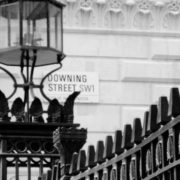
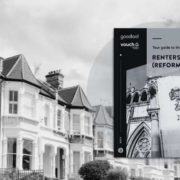


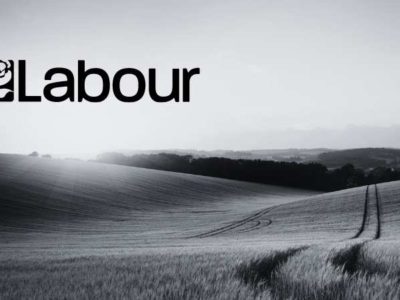

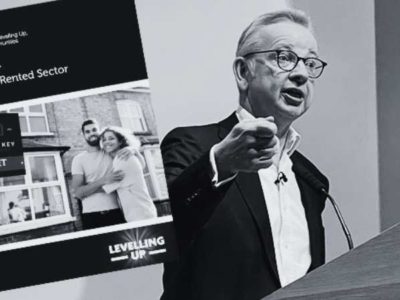


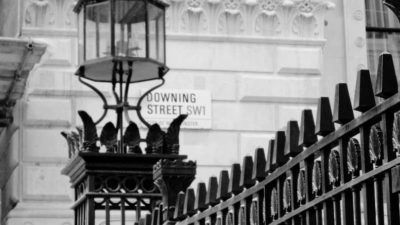
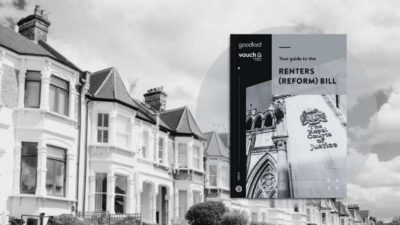







Comments